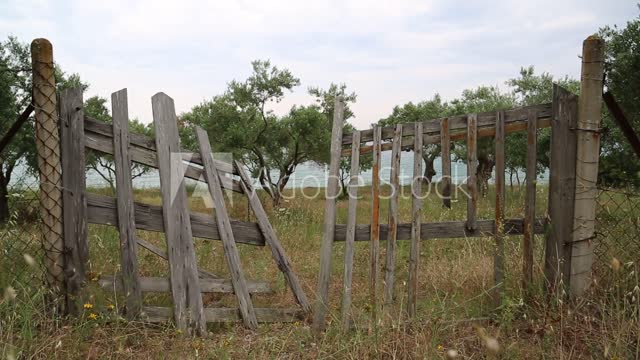Premium Only Content

Village Mad Man’ Helps Farmers Protect Their Fields With Low-Cost Bio-Fencing
AGRICULTURE | FARMING By Hiren Kumar Bose
Jagan Prahlad Bagade, also known as ‘cactus man’, from Maharashtra grew tired of wild animals and pest attacks on his crops. So he came up with an eco-friendly and low-cost solution.
imagine a fence around a farm which grows every day and protects the farmland from stray cattle and wild animals. It makes the crop resilient from pest attacks, helps maintain soil structure and prevents erosion during rains too.
That’s what Jagan Prahlad Bagade of Khaparwadi Budruk village in Akola district of Maharashtra did. He has raised a bio fence—entirely made of wildly grown cactus (locally known as ni dung)—which has now grown up to 12 ft and encircles his 30-acre farm.
Biofencing, also known as live fencing, is a line of trees or shrubs planted on farm or field boundaries. Less expensive and more useful than fences made of wood, barbed wire, or stone masonry, environmentalists consider them to be a biotic, environment-friendly method.
The cactus on the boundaries of Gagade’s fields is Euphorbia lactea, native to India, and an erect shrub of succulent branches with spiny ridges and short spines, which can grow up to 16ft in height.
Bagade (43) recalls, “When I started planting cactus cuttings on the edges of my farm people laughed at me. They called me a fool. To Veda jhala aahe (He is mad), they said.” Seven years later he encircled his farm with cactus.
He is now known as the ‘cactus man’, often called upon by the local agricultural officers to address farmers’ meets on the merits and cost-effectiveness of bio-fencing.
Realising the merits of Bagade’s bio fence some 30-odd farmers have already planted cacti on the boundaries of their farms. And as the word spread through messaging apps, farmers from different parts of the State visited him to learn about bio fencing and leave with cactus cuttings.
A multi-purpose fence
The farmer’s cactus bio fence has now grown up to 12 ft and encircles his 30-acre farm.
Being the taluka president of Punjabrao Deshmukh Biological Mission, Bagade took the initiative to involve villagers in the production of biological pesticides, the use of modern implements and water conservation activities. Acres of wasteland lying fallow for ages have been readied for cultivation with the help of the local agricultural department. Farmers have been skilled in tasks like contour bunding, compartment bunding, horizontal sowing on slopes, etc.
In May 2018, the villagers dug up 19 farm ponds, raising the total to 70; hollowed out a 1km-long nullah, and completed contour bunding on 150 acres which have led to a rise in groundwater level to 10ft from the earlier 30 ft.
Most remarkably the brackish water has changed into potable water.
But ever since drinking water became more accessible in 2007 from the Wari Hanuman dam, a mere 35 km away, villagers feel that the population of wild animals has increased.
For years, farmers like Bagade had to contend with wild animals and often scared them off with firecrackers or air guns. This was until he came to exact us ross a video on social media on growing cacti.
AboutUs About us https://bit.ly/3GUPFOa
Contact us +919942258153 kvk.subadhra@gmail.com
Thank You Very Much for Sharing YourValuable Thoughts
https://www.digistore24.com/redir/427920/CHUS87/
-
 2:48
2:48
Op Freedom
3 years ago🇳🇱 Dutch Farmers Remain Strong With Their Protest!
7888 -
 8:24
8:24
NVL
3 years agoMinecraft, Protect The Village
13 -
 4:26
4:26
Bannons War Room
3 years agoMichael Yon: Farmers Continue Their Uprising
9.59K27 -
 1:01
1:01
Reel 8 Cinema
3 years agoNY Farmers Museum and Village 1960's
1 -
 LIVE
LIVE
DoldrumDan
1 hour agoCHALLENGE RUNNER BOUT DONE WITH ELDEN RING NIGHTREIGN STORY MODE HUGE GAMING
54 watching -
 10:59
10:59
itsSeanDaniel
1 day agoEuropean Leaders INSTANTLY REGRET Disrespecting Trump
19.6K14 -
 16:43
16:43
GritsGG
16 hours agoThey Buffed This AR & It Slaps! Warzone Loadout!
18.1K1 -
 2:05:30
2:05:30
Side Scrollers Podcast
20 hours agoEveryone Hates MrBeast + FBI Spends $140k on Pokemon + All Todays News | Side Scrollers Live
106K11 -
 11:06
11:06
The Pascal Show
14 hours ago $1.32 earned'THEY'RE GETTING DEATH THREATS!' Jake Haro's Lawyer Breaks Silence On Emmanuel Haro's Disappearance!
14K2 -
 LIVE
LIVE
Lofi Girl
2 years agoSynthwave Radio 🌌 - beats to chill/game to
304 watching